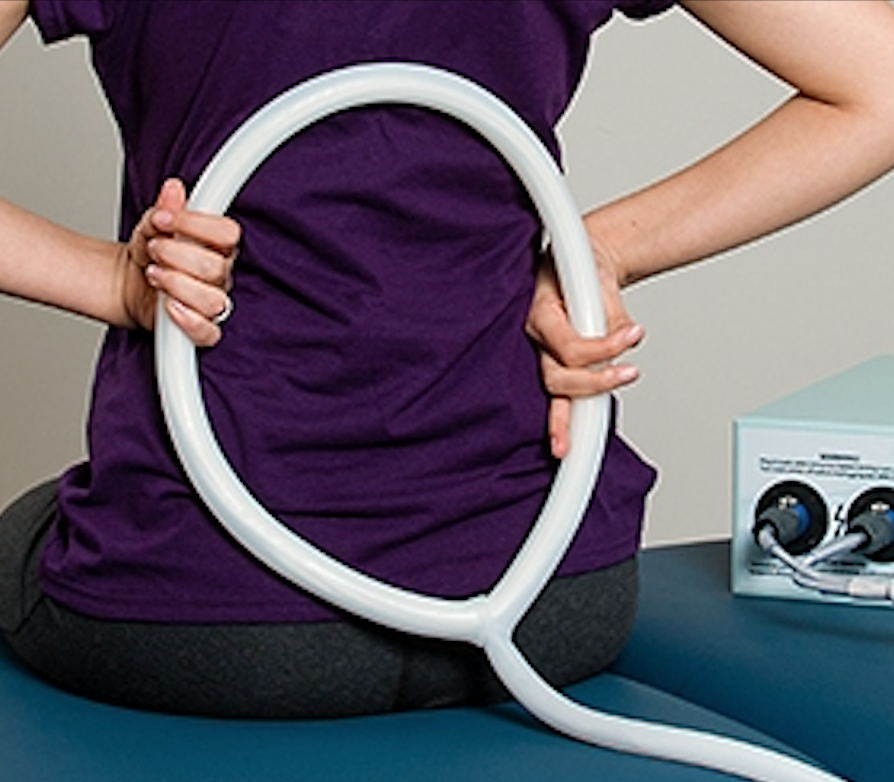Infrared Saunas: What Are They and What Can They Do for Me?
- Cryotherapy Austin Blog

- Jun 13, 2019
- 6 min read
Updated: Jan 31, 2020
Having been in existence for over 50 years, it looks like infrared saunas are here to stay. Since their earliest days, infrared light sauna treatments have been used in hospital neonatal units and in the treatment and recovery of injured athletes (Oliver, 2016). Many people claim to experience a variety of benefits from these treatments including increased energy, clarity of mind, relief from pain, and enhanced immunity. Today, we’re particularly interested in what the research has shown to be the most beneficial effects of using infrared saunas (Cudahy, 2018).
Let’s look at a few of these proven benefits and how they could possibly help you.
You may have tried a sauna before but haven’t yet heard of infrared saunas. There are a few differences. One main way they differ is that infrared saunas are usually set at lower temperatures (i.e. about 60 degrees Celsius) than traditional saunas, but produce comparable amounts of sweat (Nay, 2019). This allows for the light waves to heat the user’s body through a process called controlled hyper-thermia without heating the entire room (dePietro, 2017). According to holistic nutritionist, Lauren Berlingeri, today’s infrared sauna treatments offer a form of detoxification which is said to pull toxins and environmental pollutants out of the body’s fat cells through sweating (Lidz, 2016). But what do the studies show?
What can infrared sauna treatment help with according to the science?
Chronic Fatigue Syndrome: For those suffering from symptoms of Chronic Fatigue Syndrome, a 2015 study involved daily infrared sauna treatments performed for four weeks, five days per week on inpatients with CFS. Following treatment, the study showed that fatigue decreased significantly, as did negative mood, including depression and anxiety. Although no other improvements were noted, there were also no adverse effects reported (Soejima, et al., 2015).
Pain Relief: In 2005, patients hospitalized with chronic pain were divided into two groups. One group participated in a therapy regimen involving infrared sauna therapy five days weekly for four weeks, while the other group’s regimen was the same but did not include the sauna therapy. It was noted upon discharge that the sauna group had diminished pain behaviors and lower anger scores, and that two years later, 77 percent of the same group was able to return to work compared to only 50% of the non-sauna group (Crinnion, ND, 2011).
Depression: During another 2005 study, twenty infrared sauna sessions were given to one half of a divided group of patients experiencing mild depression, appetite loss, and general fatigue for four weeks. The other half received no sauna treatments. Following the study, the group receiving the sauna treatments had statistically significant improvements in somatic complaints, the ability to relax, and hunger compared with the non-sauna group.
Hypertension: In 1994, a German study of hypertensive men involved them receiving bi-weekly sauna treatments for three months. At the end of the study, the men were noted to have decreased their blood pressure from an average of 166/101 mmHg to 143/92 mmHg -- which is equivalent to some people’s results when taking anti-hypertensive medication (Siewert, Siewert, Winterfeld, & Strangfeld, 1994).
Anorexia Nervosa: A 2001 study provided regular in-home infrared sauna therapy to a teenage girl with anorexia nervosa. Following the study, the girl was reported to have gained weight, regained emotional balance, and reduced hyperactive activity significantly (insert citation source).
Fibromyalgia: A study in 2008 conducted by researchers from Japan’s Kagoshima University Hospital included the effects of infrared sauna sessions on female fibromyalgia patients. The patients had sauna sessions once daily from two to five times per week, after which their pain was reduced by approximately half even as early as the first session. After ten treatments, their pain was noted to have decreased by between 20% and 70% (Matsushita, Masuda, & Tei, 2008).
A similar study in 2011 gave three months of sauna treatments to 44 female fibromyalgia patients three times per week. Their pain was noted to have decreased by between 33% and 77% at the end of the three months, and six months after the study concluded their pain was still reported to be 28% to 68% improved (Matsumoto, Shimodozono, Etoh, Miyata, & Kawahira, 2011).
Peripheral Arterial Disease: For those with leg pain from peripheral arterial disease, a study from 2010 was conducted on 21 patients divided into two groups: one group received daily infrared sauna treatments for 15 minutes each time in addition to drug therapy, while the other group received only drug therapy. After six weeks of the study concluded, the group of patients having received the sauna treatments were said to have experienced a near 70% reduction in pain compared to the other group, which experienced no pain reduction at all (Shinsato, Miyata, Kubozono, Ikeda, & Et al., 2010).
Can you use it every day?
Many of the studies we read utilized daily infrared sauna treatments on participants, but the duration should be at least 15 minutes long, but less than 30 minutes each, with some experts recommending not longer than 20 minutes per session (Jillian Levy, 2018). Additionally, some say it’s ideal to turn the heat up to the full heat gradually.
Is it dangerous?
Infrared sauna treatments are generally safe, unless you have a pre-existing condition such as the following, in which case/s advice from a physician should be sought:
Dehydration to include drinking alcohol within 24 hours and medications that may increase dehydration such as antihistamines, barbiturates, beta-blockers or diuretics.
Heart Disease
Silicone breast implants
Pregnancy
Certain chronic diseases or obesity – seek advice from your medical practitioner prior to use (Moore, n.d.).
Overall, it appears that infrared sauna treatments are helpful, sometimes remarkably so, with very little likelihood to cause harm. However, it is best to use caution and seek the advice of a physician before beginning a sauna regimen if you have any of the health risks mentioned above.
Are you in or near Austin, Texas, and curious about trying an infrared sauna? Stop in anytime we’re open or give a call to ask questions or schedule your session today! Check out our full website including services HERE. We’re looking forward to seeing you.
If you are in the Austin, TX area...
Come to our facility at 3501 Hyridge Dr, Austin, TX 78759 or call (512) 522-0221 to schedule a session!
Monday - Friday 7AM - 8PM
SAT 10AM - 5PM
SUN 12PM - 4PM
We also offer low-cost membership plans and packages that accept payments from your HSA as well. Cryo Body Works offers many other treatments and therapy options like Cryotherapy, Infrared Sauna, Infrared Laser Therapy, Red Light Therapy, PEMF Therapy, Compression Therapy, Ice Baths, and B12 shot injections! We would love to hear your story, introduce you to our facility and get your health and recovery journey started!
Visit https://www.cryobodyworks.com/ for client reviews, testimonials and more featured research.
For further reading, check out these links:
References:
Crinnion, ND, W. J. (2011). Sauna as a Valuable Clinical Tool for Cardiovascular, Autoimmune, Toxicant-induced and Other Chronic Health Problems. Retrieved from Environmental Medicine: http://archive.foundationalmedicinereview.com/publications/16/3/215.pdf
Cudahy, C. (2018, October 18). Are far infrared saunas worth all the hype? Retrieved from Healthy Beginnings Lifestyle Magazine: https://www.hbmag.com/are-far-infrared-saunas-worth-all-the-hype/
dePietro, M. (2017, September 21). Sauna: Health Benefits, Risks and Precautions. Retrieved from Medical News Today: https://www.medicalnewstoday.com/articles/313109.php
Jillian Levy, C. (2018, May 14). Infrared Sauna Treatment: Are the Claims Backed Up? Retrieved from Dr. Axe: https://draxe.com/infrared-sauna/
Lidz, G. (2016, July 26). The Easiest Way to Burn 600 Calories is by Sitting in a 150-Degree Box. Retrieved from The Cut: https://www.thecut.com/swellness/2016/07/infrared-sauna-benefits.html
Matsumoto, S., Shimodozono, M., Etoh, S., Miyata, R., & Kawahira, K. (2011, August). Effects of thermal therapy combining sauna therapy and underwater exercise in patients with fibromyalgia. Retrieved from Science Direct: https://www.sciencedirect.com/science/article/pii/S1744388110000599
Matsushita, K., Masuda, A., & Tei, C. (2008, February 27). Efficacy of Waon Therapy for Fibromyalgia. Retrieved from Internal Medicine - JSTAGE: https://www.jstage.jst.go.jp/article/internalmedicine/47/16/47_16_1473/_pdf
Moore, S. (n.d.). Dangers of an Infrared Sauna. Retrieved from LiveStrong.com: https://www.livestrong.com/article/104658-dangers-infrared-sauna/
Nay, J. (2019, April 12). Health Benefits of FIR (Far Infrared) Saunas. Retrieved from Health and Med: https://healthandmed.com/blogs/featured-topics/health-benefits-fir-far-infrared-saunas
Oliver, D. (2016, September 2). I Tried to Sit in an Infrared Sauna for an Hour, and Here's What Happened. Retrieved from Huffpost: https://www.huffpost.com/entry/infrared-sauna-higher-dose-review_n_5730f198e4b0bc9cb047b745
Shinsato, T., Miyata, M., Kubozono, T., Ikeda, Y., & Et al. (2010, November). Waon Therapy Mobilizes CD34 + Cells and Improves Peripheral Arterial Disease. Retrieved from Journal of Cardiology: https://www.journal-of-cardiology.com/article/S0914-5087(10)00171-1/abstract
Siewert, C., Siewert, H., Winterfeld, H., & Strangfeld, D. (1994, September). [The Behavior of Central and Peripheral Hemodynamics in Isometric and Dynamic Stress in Hypertensive Patients Treatment with REgular Sauna Therapy]. Retrieved from NCBI: https://www.ncbi.nlm.nih.gov/pubmed/7801668
Soejima, Y., Munemoto, T., Masuda, A., Uwatoko, Y., Miyata, M., & Tei, C. (2015). Effects of Waon Therapy on Chronic Fatique Syndrome: a Pilot Study. Retrieved from NCBI: https://www.ncbi.nlm.nih.gov/pubmed/25748743
































Comments